Are you considering investing in a projector for your home or office and wondering whether it will take up too much energy? Do projectors use a lot of electricity? It’s an important question, as no one wants to end up with a hefty utility bill just from using their projector! Answering this question isn’t as simple as thinking about the wattage written on the projector box. In this blog post, we’ll explore some of the key factors that influence how much electricity modern projectors actually use. You don’t have to worry about running astronomical power bills – by understanding what affects electricity consumption in projectors you can make sure that does not happen! Read on and get peace of mind knowing exactly how much energy your new device is likely to consume.
How Does a Projector Work?
Projectors are an extremely useful piece of equipment in both professional and home settings. This technology has been around for decades, but today’s projectors offer ever-increasing resolution, brightness, and other features that make them indispensable. So how does a projector actually work? [1]
A projector works by focusing light from a source bulb through a lens system onto a projection screen. Inside the projector, a small mirror reflects light from the bulb onto a series of lenses that magnify and focus it onto the projection screen. High-end projectors may use LCDs or DLP chips to create an image, while older models use just mirrors to achieve their desired result.
Projector brightness is measured in lumen (lm). Lumen determines how bright the image appears on a projection screen or wall. The higher the lumen rating, the brighter and more vibrant colors are rendered in an image. Higher lumen ratings also allow for bigger images even when projected from short distances.
Projector resolution is measured in pixels (px). Resolution refers to how sharp and detailed an image will appear on a projection surface. The higher the resolution, the more pixels in an image and the sharper it will appear on a screen or wall.
Projector distance is measured in throw ratio (TR). Throw ratio determines how far from a projection surface an image can be projected while still appearing clearly. A projector’s height must usually remain within a particular range to produce a large image, and the throw ratio helps to determine this range.
Finally, the aspect ratio of a projector refers to its width-to-height ratio. Common aspect ratios include 16:9 (widescreen) and 4:3 (traditional). The aspect ratio can generally be changed in most projectors to fit different screens or televisions. [2]
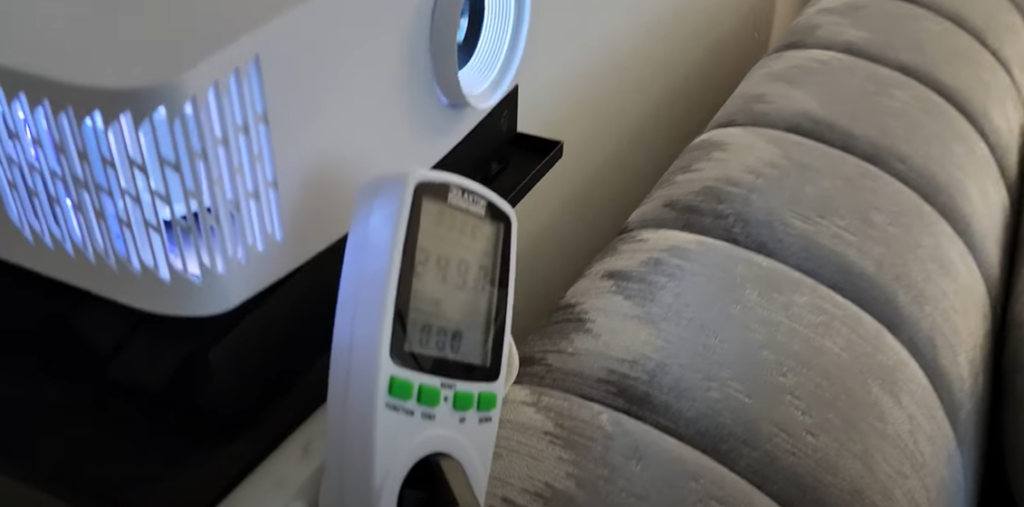
What’s Interesting to Watch on a Projector?
Projectors offer a unique viewing experience that is hard to find with other television options. With their versatile display capabilities, projectors are ideal for both home and commercial uses. [3]
For movie night at home or an office presentation, there are plenty of things to watch on a projector. Here are some fun ideas you can try out:
Movies
Movies are always a great choice, and projectors can bring your favorite films to life. Whether you’re into classic blockbusters or modern thrillers, projectors make it easy to create a cinematic experience at home. For the best sound quality, be sure to pair your projector with an external speaker system.
Video Games
Video games look stunning when projected onto a wall or screen. Connect the projector to your gaming system for a larger-than-life experience that will keep you playing for hours on end.
Sports
Gather your friends and family around the projector to cheer on your favorite team. Watching sports on a big screen is an exciting way to get into the game, and your projector makes it easy to set up.
Music Videos
Music videos are the perfect way to get everyone dancing and singing along. Create a custom playlist for your next party, or use the projector to show off your favorite artist’s music video collection.
YouTube Clips
From funny cat videos to the latest news clips, YouTube has something for everyone. Use your projector to share your favorite web content with friends and family. You can even use it as a mini movie theater by streaming movies from popular services like Netflix or Hulu.
Documentaries
Documentary films can be an entertaining and educational way to spend an evening. With a projector, you can learn about any topic from the comfort of your own home.
Art
Projectors are great for displaying artwork, from classic masterpieces to modern art pieces. Enjoy a unique viewing experience by projecting digital works or slideshows onto the wall.
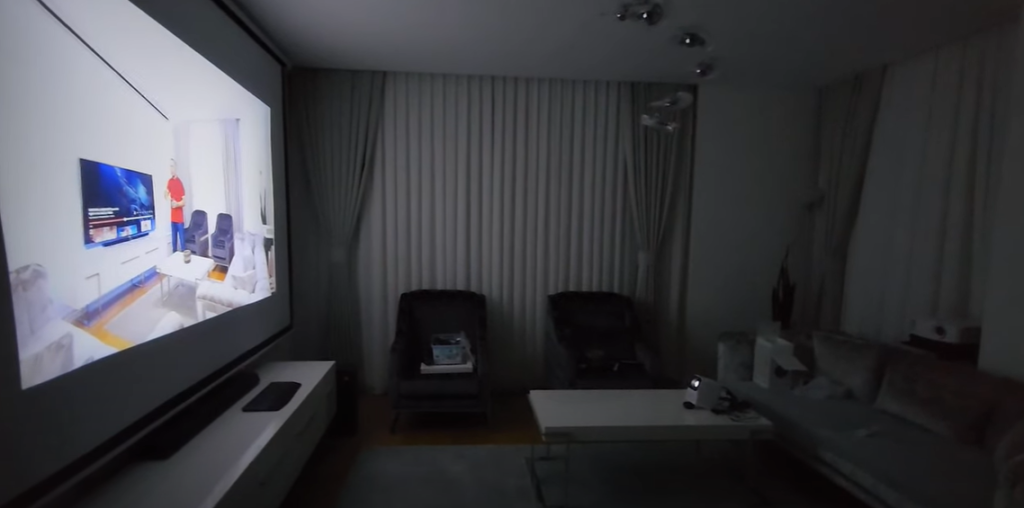
Photos
Capture special moments and display them in a big way on your projector. Create slideshows of your favorite photos or use the projector to show off that vacation you took last summer. You can also use it to project presentations, portfolios, and other visual content for work. [4]
Is It Economical to Use a Projector?
When it comes to meeting spaces, projectors offer a lot of value. Not only do they help create an immersive experience for your audience, but they also save time and money by reducing the need for additional equipment like monitors, speakers, and cables. But is it economical to use one?
In short, it depends on what you need the projector for and how much space you have available. Projectors can be a great way to create an immersive experience in meeting spaces, but they can also be costly depending on usage and size. However, if you’re looking for a cost-effective solution that still looks great, then projectors are definitely worth considering.
Regardless of what you choose, it’s essential to remember that projectors require proper maintenance and upkeep in order to perform their best. This includes regularly cleaning the lens, making sure the lamp is in good condition, and ensuring that the projector itself is properly calibrated for optimal performance. Taking these steps will help ensure your projector lasts a long time and performs at its best. [5]
How Much Electricity Is Required to Use a Projector?
The exact amount of electricity needed to power a projector depends on the type of projector being used. Traditional projectors typically require more electricity than LED projectors. Most traditional projector models require an input of 75-250 watts of power, while LED models can typically use around 25-50 watts.
Nevertheless, it’s crucial to remember that the wattage requirements of a projector are just one factor to consider when selecting a model. The lumens rating and contrast ratio are also key factors in choosing the right projector for your needs.
For example, a projector with more lumens will produce a brighter image and provide greater viewing distance in well-lit environments. The contrast ratio determines how much darker dark colors will appear when compared to light colors. Higher contrast ratios mean higher clarity of images on the screen.
In addition to choosing the best projector for your needs, it’s also important to think about the energy efficiency of the model. Many projector models come with a “green mode” that reduces power consumption and helps save money on electricity bills.
If you’re in the market for a new projector, be sure to consider not only wattage requirements but also lumens rating and contrast ratio as well as energy efficiency when making your selection. With the right model, you can enjoy a great visual presentation while still saving energy and money.
Finally, keep in mind that the wattage needs of any projector are split between two components: the lamp and the electronics (the fan, internal boards, etc). It’s important to understand how much electricity each of these components requires in order to properly calculate the total power required for your projector. [6]
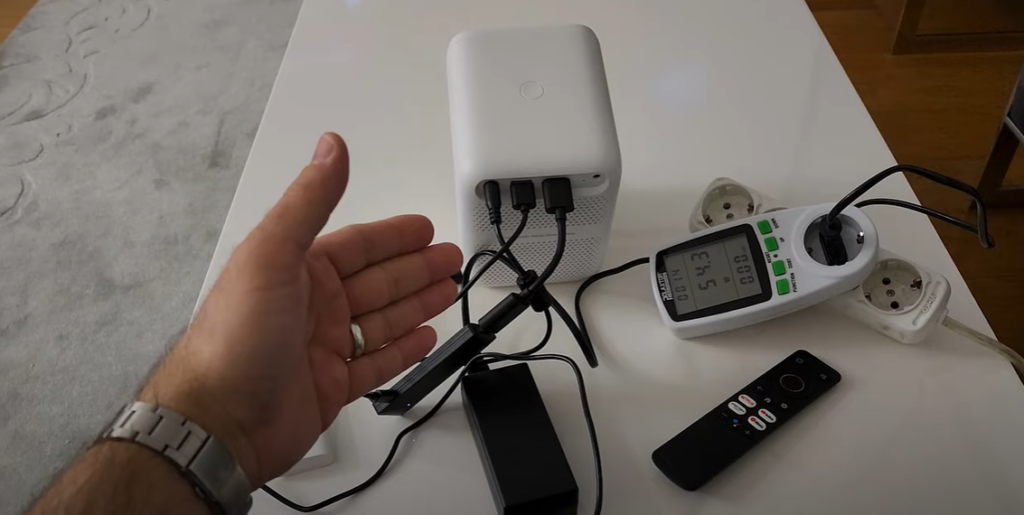
Is a Projector More Cost-Effective Than an HDTV – Comparison
Price
When it comes to price, HDTVs are usually more expensive than projectors. However, the cost can vary depending on the size and type of projector you buy. If you want a large-screen setup with an HDTV, you will need to spend a lot of money. On the other hand, if you opt for a projector instead, then your budget friendly option is to buy a model with lower brightness and resolution.
Brightness
Projectors are typically brighter than HDTVs, which can be an advantage if you plan on setting up your home theater in a room with lots of light. Projectors also have the option to adjust the brightness levels according to the ambient lighting conditions. This feature is not available in HDTVs.
Resolution
HDTVs are usually much sharper than projectors, which makes them a better choice for watching movies or playing video games. The resolution of an HDTV is typically 1080p or 4K depending on the model you buy. On the other hand, projectors can only reach up to 1080p in terms of resolution.
Portability
HDTVs are quite bulky and not as portable as projectors. HDTVs need to be mounted on a wall in order to offer the best viewing experience. Projectors, on the other hand, can easily be moved from one room to another and set up quickly for an optimal viewing experience.
Installation
HDTVs are usually easier to install than projectors. Most HDTVs come with built-in mounting brackets that make setup a breeze. Projectors usually require professional installation or extensive experience in order to ensure the best viewing experience.
Overall Cost-Effectiveness
When considering overall cost-effectiveness, projectors are usually much more cost-effective than HDTVs. The reason for this lies in the fact that they offer a larger screen size and better brightness at a lower price point. However, if you’re looking for a sharper picture quality then an HDTV might be the better choice for you.
Utilized Electricity
Projectors also consume less electricity than HDTVs, which makes them a more energy efficient option. This can result in lower monthly bills and a smaller carbon footprint for your home. [7]
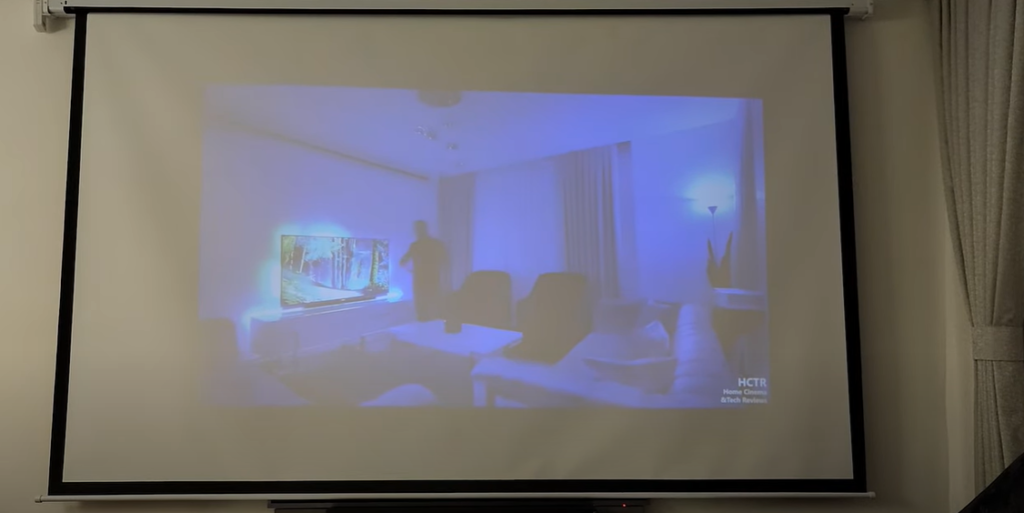
How to Select a Projector?
Selecting the right projector for your needs can be a daunting task, especially with the variety of models available on the market. The key is to consider which features and characteristics are most important to you before making a decision. Here are some tips that will help ensure you make the best choice.
- Know Your Room Size: It’s important to first measure the space where you plan to use the projector. The size of the room will determine how far away from the projection screen your projector must be in order for a clear image. Most manufacturers provide information about ideal viewing distances, so you can find one that meets your needs and fits in your room.
- Brightness: A projector’s brightness is measured in lumens and your choice should be based on the typical lighting conditions for your viewing room. For dark rooms, you’ll need brighter projectors (around 5,000 lumens) while lighter rooms can use lower lumen models (2,500-4,000 lumens).
- Resolution: The resolution of a projector refers to the amount of pixels in an image. The higher the resolution, the sharper and cleaner your image will be. For a cinema-like experience, choose a projector with 1080p HD resolution or higher.
- Connections: You’ll want to make sure your projector has all the necessary ports for connecting devices like laptops, game consoles, and streaming boxes. Look for models that have HDMI, VGA, DVI, and USB ports.
- Lamp Life: Projector lamps have limited lifespans so you’ll want to choose a model with a long-lasting lamp. The average lamp life is around 3,000 hours but some projectors last up to 10,000 hours or more.
- Cost: Don’t forget to factor in the cost of the projector when making your selection. Do your research and compare prices from different retailers to get the best deal possible. [8]
FAQs
Is It ok to run the projector all day?
Yes, you can run the projector all day if needed. However, it is important to remember that projectors use a lot of electricity and should be used sparingly. If your projector has an Energy Saving mode or an Eco Mode option, it is best to switch to these modes while not actively using the projector in order to conserve energy. Additionally, you should make sure to unplug the power cable when not in use for extended periods.
Also, if you’re running the projector for an extended period of time, be sure to give it a break every few hours or so to avoid overheating and potential damage. This is especially true in hot climates where temperatures can exceed normal levels. Taking these simple steps will help ensure that your projector is operating efficiently and safely.
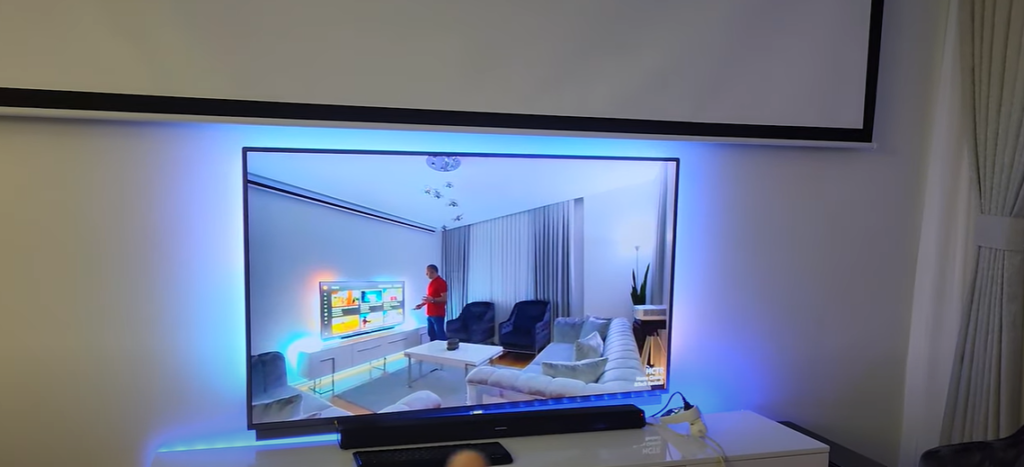
Do LCD projectors use a lot of electricity?
This is a common question that we hear often. When it comes to projectors, the answer will depend on the size and type of projector you have. Generally speaking, however, LCD projectors are actually quite energy efficient and don’t use as much electricity as some might think.
For instance, LCD projectors usually only draw between 75-250 watts of power when in use, compared to older CRT projectors which can draw up to several thousand watts. Even if you need a large projector for a big theater or auditorium, you can find LCD projectors with extremely low wattage and still get the job done.
LED projectors are even more energy efficient than LCD models. LED projectors usually draw between 30-60 watts of power, which is much less than LCD projectors and almost negligible when compared to CRT models.
Are projectors healthier for your eyes?
The answer is yes, projectors can be better for your eyesight than using a television or monitor. Projector screens are typically larger and create less strain on the eyes because they allow you to sit farther away from them. The picture also appears sharper and more vibrant due to their brightness, which help reduce eye fatigue. Additionally, many projector models come with features like blue light filtering or color adjustments that can enhance the picture quality and reduce eyestrain. However, it’s important to remember that not all projectors are created equal – so be sure to research your options and find one that best suits your needs.
How many hours are projectors good for?
Projectors can last for months or even years. The typical lifespan of a projector lamp is usually between 2,000 and 4,000 hours. It is recommended to use the projector at around 50% of its maximum brightness in order to get the longest life out of it. Projectors that are used frequently should have their lamp replaced after about 1,500-2,000 hours of use, while projectors used less often can last up to 4,000 hours.
In addition to the lifespan of the lamp, it is important to also consider the life of other parts in a projector that may need replacing over time such as filters and cooling fans. A filter should be replaced every 6-12 months depending on usage, and the cooling fan should be replaced every 5-10 years depending on how often the projector is used.
Useful Video: Projector vs TV Power Consumption TEST with Shocking Result !
Final Thoughts
After researching the power consumption of projectors, it is clear to see that while they do draw some electricity from the grid, their typical wattage use is not too concerning. Furthermore, opting for more energy-efficient models and making use of features like sleep mode can help to minimize any power costs associated with operating a projector. With all these factors taken together, you can rest assured that using projectors isn’t going to make much of an impact on your electric bills. So if you’re thinking about turning your home into a mini-movie theater or upgrading your boardroom technology – you can be sure that a projector won’t send your power bill spiraling out of control! Get out there and find the right option for you today – you’ll be glad you did.
References:
- https://www.projectorpoint.co.uk/blog/how-do-projectors-work
- https://www.makeuseof.com/how-does-a-projector-work/
- https://www.benq.com/en-us/knowledge-center/knowledge/eight-creative-ways-to-use-your-projector.html
- https://pointerclicker.com/cool-things-to-do-with-a-projector/
- https://www.gadgetreview.com/projector-vs-tv-power-consumption
- https://ivankyo.com/blogs/tech/how-much-power-does-a-projector-consume
- https://tvsguides.com/projector-vs-tv/
- https://www.purple-cat.co.uk/projector-buying-guide-how-to-choose-a-projector/




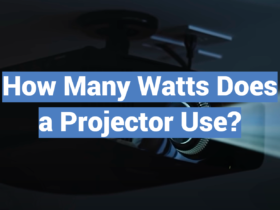
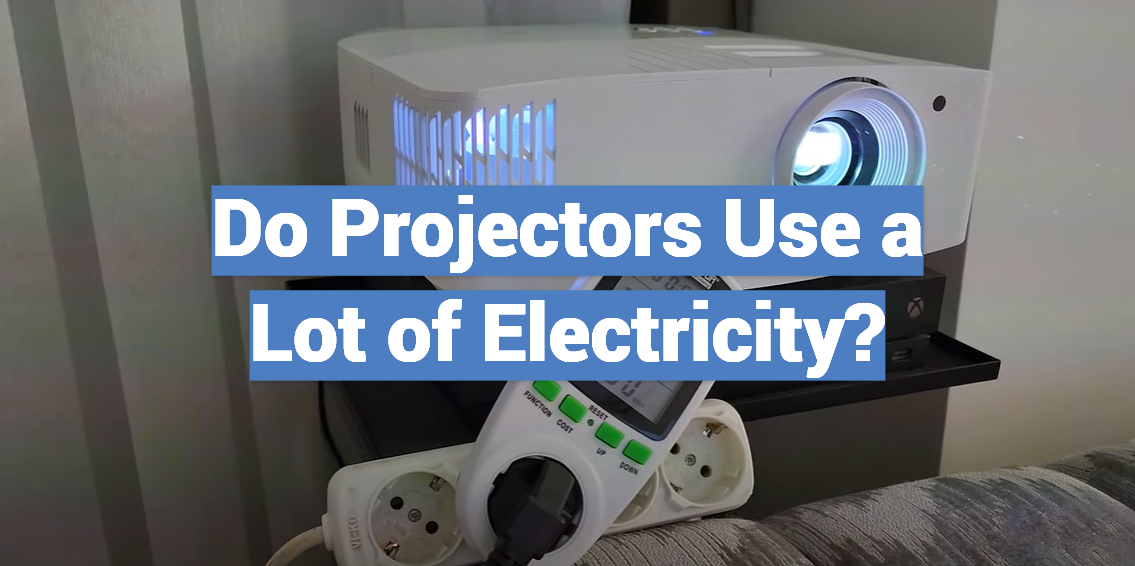

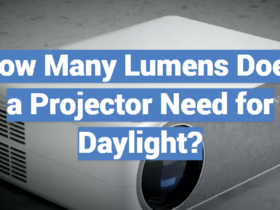
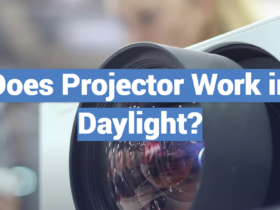
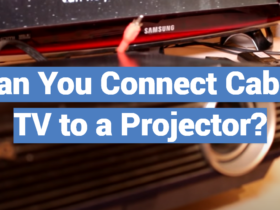
Leave a Review